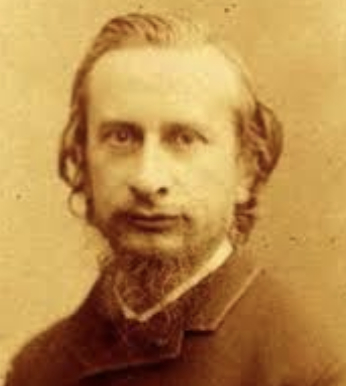On this date in 1841, Edme Marie Gustave Tridon was born into a wealthy family in Châtillon-sur-Seine, France. He studied law and was qualified to practice it but never did. As a student he became a radical republican socialist and opponent of Emperor Napoleon III.
He also embraced metaphysical materialism and atheism, considering the latter the highest achievement of scientific reason. Among the figures of the French Revolution, he most admired Jacques-René Hébert, a Parisian guillotined by the Jacobins. Tridon published two books on the Hébertists: The Hébertists: Protest Against a Historical Calumny (1864) and The Commune of 1793: The Hébertists (1871). He also published a history titled The Gironde and the Girondists (1869).
Tridon’s views corresponded with those of veteran revolutionary Louis Auguste Blanqui, whom he met in the Sainte-Pélagie prison in 1865. Tridon had been incarcerated there for writing anti-religious articles deemed contrary to morality. After his release he founded the journal Candide, which was eventually shut down by the authorities, and Tridon was jailed again.
In 1866 he joined the First International, one of the first Blanquists to do so. On his return to France from the International congress, he was again arrested and remained in prison until 1868. He founded the journal Revue and contributed articles to several other journals. In January 1870, fearing arrest, he fled to Brussels. He was sentenced in absentia to deportation.
A dark stain on his legacy was the so-called racial anti-Semitism in vogue within the French anarchist left during the mid-19th century. Tridon wrote Du Molochisme Juif, a screed published posthumously that pleaded for an Aryan victory over the Jews to save Western civilization and referred to Jews as “a carnivorous race sacrificing humans to its gods.” (Judd L. Teller, Scapegoat of Revolution, 1954)
The exact cause of his death at age 30 is uncertain. Some sources say it was suicide, but British author Joseph Mazzini Wheeler wrote that while imprisoned in Sainte-Pélagie, he “contracted the malady which killed him.”
Historian Maurice Dommanget wrote in Hommes et Choses de la Commune (Men and Things of the Commune) that “This twenty-nine-year-old man is already worn out. He is hunched to the point that he looks like he is hunchbacked, his face is riddled with pimples, his cheeks hang down. His weak constitution, his delicate health did not allow him to overcome the feverish militant life and the long stays in prison.” (D. 1871)


